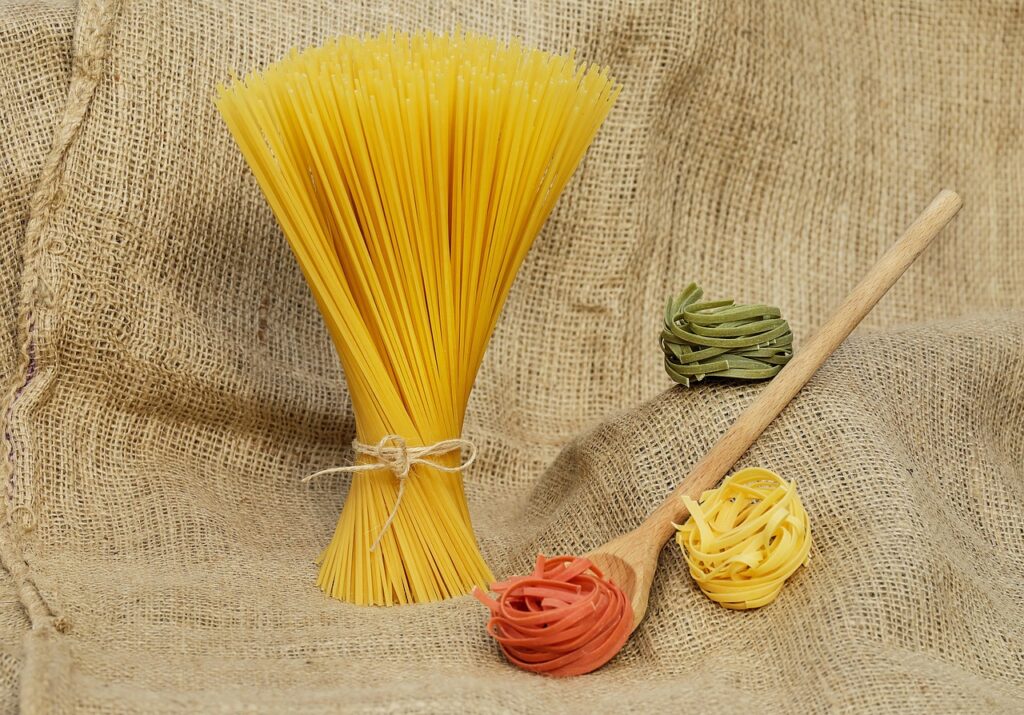The Rising Popularity of Pasta in Eastern Europe: Trends, Types, and Tastes
Pasta, a staple of Italian cuisine, has been making significant inroads into Eastern European diets over the past few decades. As food distributors like Moon Keks expand their offerings, pasta has become a versatile and beloved option for consumers and food service providers alike. In this post, we’ll explore the growing pasta market in Lithuania, Poland, Estonia, Latvia, and other Eastern European countries, discussing trends, popular types, and how this Mediterranean favorite is being adapted to local tastes.
The Pasta Revolution in Eastern Europe
Once dominated by potatoes, grains, and local dumplings, Eastern European cuisines are increasingly embracing pasta as a quick, versatile, and delicious meal option. This shift can be attributed to several factors:
- Globalization of Food Culture: As travel becomes more accessible and international cuisines more prevalent, Eastern Europeans are developing a taste for Mediterranean flavors.
- Convenience: In an era of busy lifestyles, pasta offers a quick and easy meal solution that appeals to younger generations and working professionals.
- Versatility: Pasta’s ability to pair with a wide range of sauces and ingredients makes it adaptable to local tastes and available produce.
- Health Trends: With the rise of health-conscious eating, whole grain and vegetable-based pastas are gaining popularity as nutritious alternatives.
Popular Pasta Types in Eastern Europe
While traditional Italian pasta shapes are widely available, certain types have found particular favor in Eastern European markets:
- Spaghetti: The classic long noodle remains a favorite, often served with local twists on traditional sauces.
- Penne: Its tube shape makes it perfect for holding hearty sauces, appealing to Eastern European preferences for robust flavors.
- Fusilli: The spiral shape is popular in pasta salads, a growing trend in summer menus across the region.
- Lasagne: As a baked dish, lasagne appeals to the Eastern European love of hearty, oven-cooked meals.
- Tagliatelle: This ribbon-like pasta is often paired with creamy sauces, reminiscent of local noodle dishes.
Country-Specific Trends
Poland
Poland has seen a significant increase in pasta consumption over the past decade. Polish consumers are particularly fond of filled pasta like ravioli and tortellini, which echo their own tradition of pierogi. There’s also a growing market for gluten-free and whole grain pasta options, catering to health-conscious consumers.
Estonia
In Estonia, pasta is often incorporated into local dishes, creating fusion cuisine. For example, pasta salads with smoked fish or wild mushrooms are popular during the summer months. There’s also a trend towards premium, artisanal pasta in high-end restaurants.
Latvia
Latvian cuisine is embracing pasta as a base for traditional flavors. Pasta dishes featuring local ingredients like wild garlic, forest berries, and game meats are gaining popularity. There’s also a growing interest in fresh, homemade pasta among food enthusiasts.
Lithuania
As Moon Keks’ home base, Lithuania represents a key market for pasta distribution. Lithuanian consumers are showing increased interest in regional Italian pasta varieties, with a particular fondness for orecchiette and strozzapreti. There’s also a rising demand for organic and locally-produced pasta made from Lithuanian grains.
Other Eastern European Countries
Countries like Hungary, Czech Republic, and Romania are also seeing growth in pasta consumption. In these markets, there’s a trend towards pasta as a gourmet ingredient, with a focus on premium, imported Italian brands.
Adapting Pasta to Local Tastes: While traditional Italian pasta dishes are popular, there’s a significant trend towards adapting pasta to local flavors and ingredients:
- Creamy Mushroom Pasta: Capitalizing on the region’s love for forest mushrooms, this dish combines pasta with local fungi varieties.
- Smoked Fish Pasta Salad: Perfect for summer, this dish incorporates the Baltic region’s excellent smoked fish.
- Beetroot Pasta: Leveraging the popularity of beetroot in Eastern European cuisine, some innovative chefs are creating vibrant, pink pasta dishes.
- Potato and Pasta Fusion: Some creative recipes combine pasta with potatoes, bridging traditional Eastern European staples with Mediterranean influence.
- Sauerkraut Pasta: Incorporating the tangy flavor of sauerkraut into pasta dishes offers a unique fusion of Italian and Eastern European tastes.
The Role of Food Distributors
For food distributors like Moon Keks, the growing pasta market presents significant opportunities:
- Diverse Product Range: Offering a wide variety of pasta types, from classic to artisanal, caters to different market segments.
- Quality Sourcing: Partnering with reputable Italian producers ensures authenticity and quality, key factors for discerning consumers.
- Local Collaborations: Working with local producers to create unique, regionally-inspired pasta products can set a distributor apart.
- Education and Recipe Sharing: Providing recipe ideas and cooking tips can help drive pasta sales and usage in both retail and food service sectors.
- Packaging Solutions: Offering pasta in various package sizes caters to both individual consumers and bulk-buying restaurants.
Future Trends
Looking ahead, several trends are likely to shape the pasta market in Eastern Europe:
- Plant-Based Pastas: With the rise of veganism and vegetarianism, pasta made from legumes, vegetables, and alternative grains is set to grow.
- Functional Pastas: Enriched with vitamins, minerals, or protein, these pastas appeal to health-conscious consumers.
- Fresh Pasta: As consumers become more discerning, the market for fresh, refrigerated pasta is likely to expand.
- Sustainable Packaging: Eco-friendly packaging for pasta products will become increasingly important to environmentally conscious consumers.
- Digital Integration: QR codes on packaging linking to recipe ideas and cooking videos could enhance the consumer experience.
The pasta market in Eastern Europe represents a dynamic and growing sector of the food industry. For distributors like Moon Keks, staying attuned to local tastes while introducing new and exciting pasta products can drive business growth. As Eastern European consumers continue to embrace pasta, there’s ample opportunity for innovation, whether through new flavor combinations, healthier options, or premium artisanal products. By understanding and adapting to these trends, food distributors can position themselves at the forefront of this culinary evolution.





